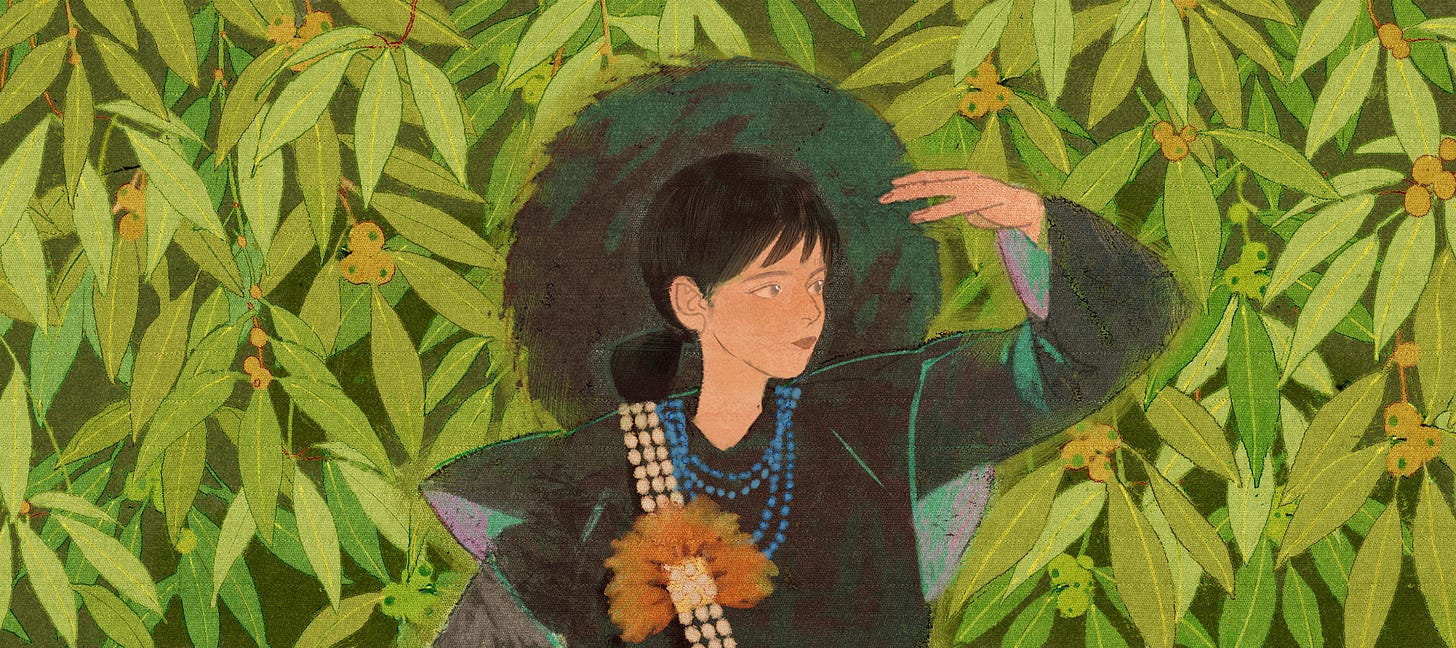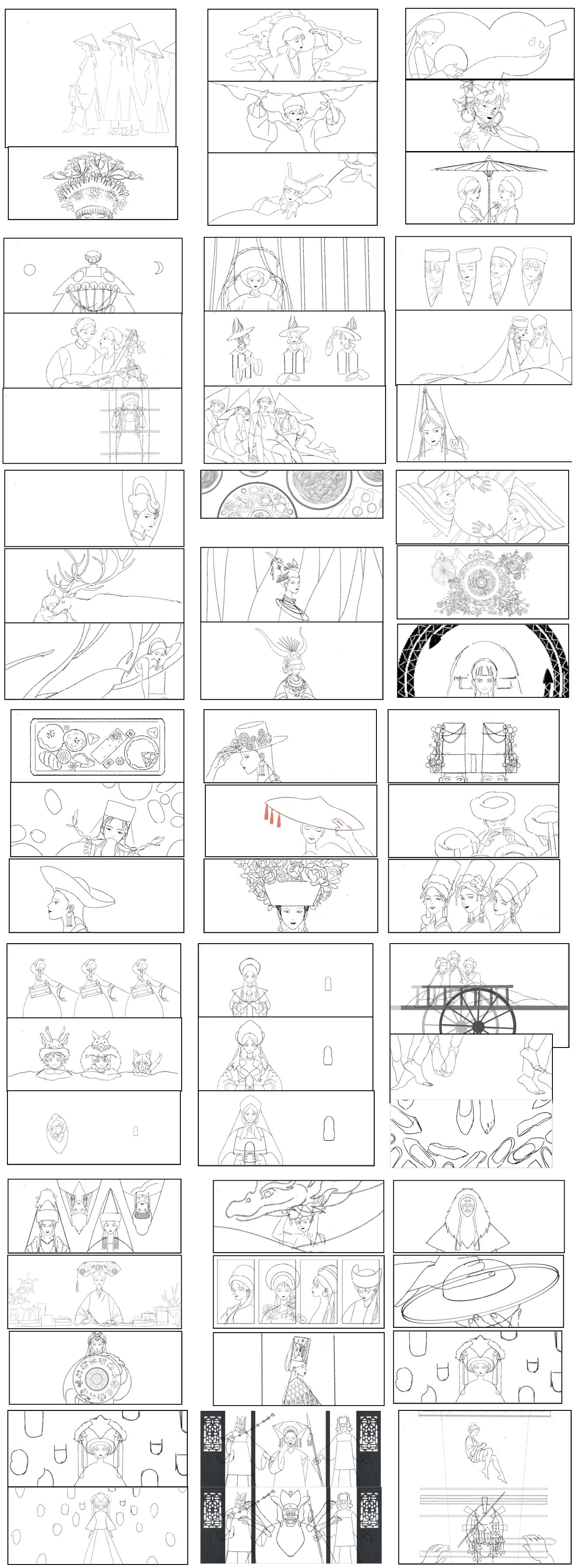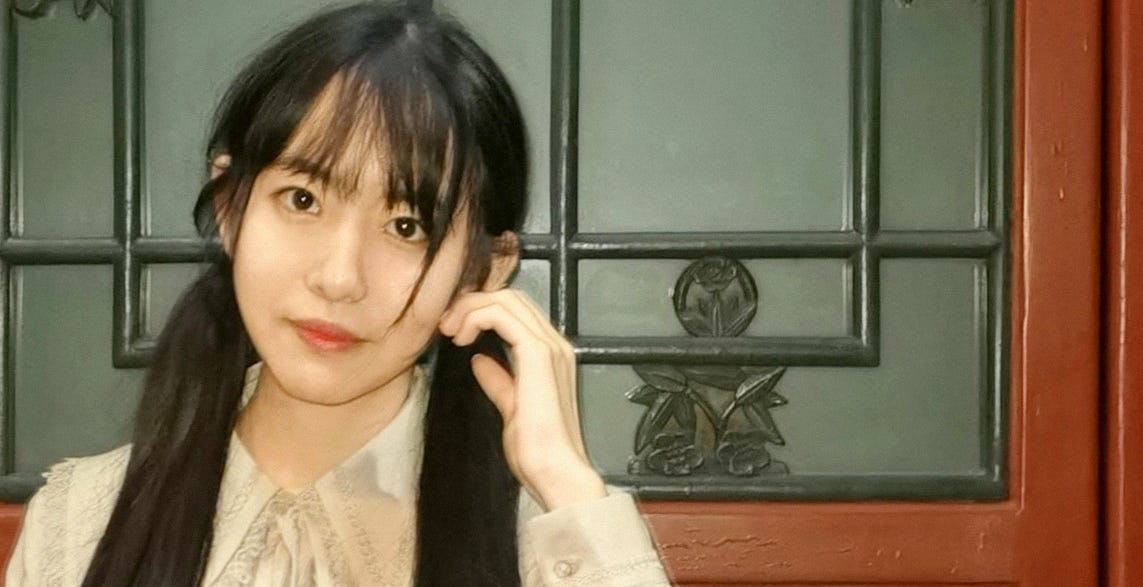+3: The Student Animation That Won China's Heart
Talking to animator Zhou Fangyuan about her beautiful film 'Kaleidoscope.'
Welcome to the third bonus issue of the Animation Obsessive newsletter! Glad you could make it.
There’s quite a story behind this week’s edition. We’re chatting with Zhou Fangyuan, the animator whose student film Kaleidoscope swept the internet in China this year. We shared a clip of it in July, and the response on Twitter was huge. So, last month, we fired off a cold email to Zhou and asked for an interview.
It was a long shot. To our knowledge, Zhou has never been interviewed in English before. We had no idea whether she’d be interested. But she was incredibly generous with her time, sharing insights into her process and a ton of behind-the-scenes artwork. We’ve got it all for you below.
Zhou is 22 years old and a recent graduate of Tsinghua University in Beijing. Kaleidoscope is her tribute to China’s 56 ethnic groups, from the Han majority to the Miao and Russian minorities. It took her a year to make — six months of research, six of production. She’s said that she essentially lived at the library during the research phase.
We hope that you’ll love seeing Zhou’s thoughts and art as much as we have.
Enjoy!
Animation Obsessive: Firstly, could you introduce yourself to our readers?
Zhou Fangyuan: Hello, everyone. My name is Zhou Fangyuan. I am a graduate of the Academy of Arts & Design, Tsinghua University. At present, I am a freelance illustrator and animation art director.
What got you interested in the ethnicities of China?
I grew up in a city with a strong traditional cultural atmosphere. Therefore, since childhood, I have had more of a sense of identity with traditional cultures.
After entering the Academy of Arts & Design of Tsinghua University, the academic traditions and curriculum affected me deeply, which made me understand more about ethnic cultures. In college, I also studied courses related to the ethnic cultures of China, which inspired me a lot as well.
Presenting the traditional dress of 56 different cultures is a tremendous undertaking. Could you talk about your research for the animation?
China is a very ancient country with 5,000 years of civilization. The 56 ethnic groups bred on this land have also had a very long process of development. They are harmonious and unified with each other and still have very different and profound cultural heritages.
Therefore, personally, completing this film required a massive amount of research. Taking half a year to survey the 56 ethnic groups in China can only be considered a relatively crude, preliminary exploration. Really, it is only a very superficial study of the ethnic cultures.
The goal of this film is to focus on the arts and humanities, and the main creative inspiration comes from the different historical myths, legends and costumes. In the process of researching, I was often confused by the incomplete data and lacked inspiration. Fortunately, with further study and understanding of these splendid cultures, I always got an idea and found a way.
Kaleidoscope looks almost like a moving illustration. What techniques did you use to achieve this unique look?
Because I hoped its style could be like traditional Chinese decorative art, this animation references 1960s Chinese illustration and animation. The moving parts were achieved with TVPaint and Adobe Animate CC, and the coloring was completed using Paint Tool SAI, according to the painting standard of those illustrations.
What were your goals with the film? What did you hope it would accomplish?
The film is positioned as an impressionistic animation of China’s 56 nationalities, hoping to show that the Chinese nation is like a kaleidoscope. They are different, but they are harmonious and unified.
In my studies, I have felt that the national culture is rich with meaning and vitality. I hope to convey this feeling to the audience, so that more people who have a sense of identity with Chinese culture like me can find resonance with it. I also hope to stimulate Chinese audiences’ desire to pay attention to our gorgeous ethnic cultures and explore them.
What was it like when Kaleidoscope became popular online in China?
I first published my work on the websites Weibo and Bilibili. Immediately it became a top search and reached number one. It has 15 million views on Weibo and 5 million views on Bilibili. About 100,000 people have shared it, and it has received more than 20,000 comments. As a hot topic, there are also hundreds of websites linking to it.
That the film became so popular is beyond my imagination. However, I thank everyone who is interested in my works; I will make more works to show you.
Is there anything you’d like to highlight about the film to readers outside China?
As a Chinese person, I hope foreign friends can understand more of China’s national culture through this short film, and I hope to have more cultural exchanges with foreign friends, enhancing mutual understanding and promoting mutual friendship.
You’ve said in other interviews that you’re working on a book based on Kaleidoscope. Could you tell us about that?
Right now, I am continuing my deep research into the cultures of the 56 ethnic groups.
My plan is to make a picture book full of more details and contents, which will be a more perfected creation. At present, I am busy with the collection of materials and drawing a draft of the book. I hope our dear readers will like it.
Besides the book, what are your next plans?
I am very interested in different art forms. While continuing to draw illustrations and animations, I also hope to try different artistic media, maintain inspiration and continue to create more works.
Thanks for interviewing me. I wish everyone good fortune!
We’d like to thank Zhou Fangyuan for chatting with us and sharing her behind-the-scenes art. You can find her on the Chinese social media platform Weibo. Last year, she also uploaded some of her amazing work to Twitter.
That’s a wrap on the final bonus issue of our trial period! Going forward, weekly bonus issues will be exclusive to paying subscribers (members).
The first members-only issue drops next Thursday. It’s a dive into Katsuhiro Otomo’s intricate storyboard art for projects like Akira and the little-known masterpiece Combustible. If you’d like to see it, you’ll find everything you need on our subscription page:
Membership costs $10 per month or $100 per year. There’s an additional 40% discount available for students who email us for a special code.
As always, our Sunday issues will remain free for all readers to enjoy. We hope you’ll check back at the end of the week for our usual batch of round-ups, lookbacks and more.
Hope to see you again soon!







